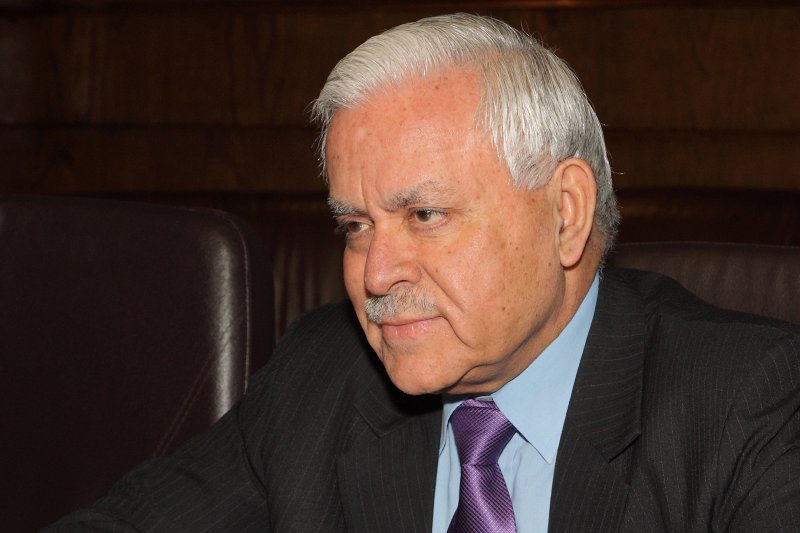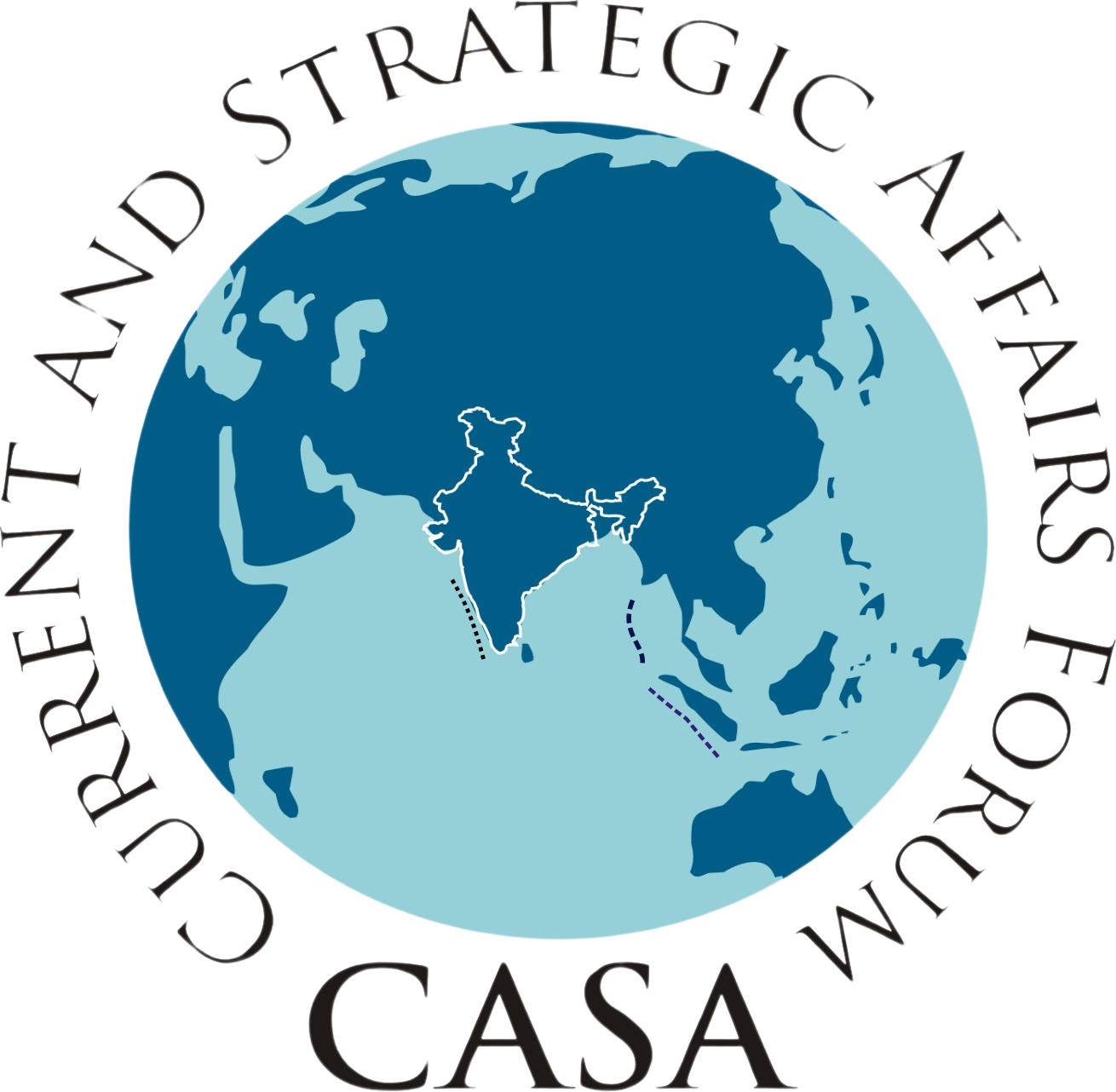Ashok Sajjanhar: India is open to defense cooperation with Azerbaijan — INTERVIEW
- May 5, 2025
- Posted by: admin
- Category: India



Ashok Sajjanhar has dedicated over three decades to the Indian Foreign Service, holding key diplomatic positions in Washington, D.C., Brussels, Moscow, Geneva, Tehran, Dhaka, and Bangkok.
He has served as India’s ambassador to Kazakhstan, Sweden, and Latvia and played a pivotal role in negotiating India’s trade agreements, including the Uruguay Round of Multilateral Trade Negotiations, India-EU, India-ASEAN, and the India-Thailand Free Trade Agreement. Beyond diplomacy, he has led the National Foundation for Communal Harmony and currently serves as the president of the Institute of Global Studies in New Delhi. As an expert in international relations and Indian foreign policy, Amb. Sajjanhar actively contributes to global discourse through his writings and public engagements.
In an exclusive interview with News.Az, a former ambassador Sajjanhar discusses the evolving relations between India and Azerbaijan, defense partnerships, geopolitical challenges with China and Pakistan, and his perspective on global security issues, including the Russia-Ukraine war and NATO’s expansion in the Baltic region.


Source: ChatGPT
– How do you assess the current level of bilateral ties between India and Azerbaijan?
– I view India-Azerbaijan relations very positively. We share a long-standing historical, cultural, and civilizational connection—dating back to the Silk Road era, when Indian traders frequently traveled through Azerbaijan. Even today, a monument near Baku commemorates this shared history. Our bilateral trade has grown significantly, reaching $1.5 billion, but the potential is much greater. India is already the third-largest buyer of Azerbaijani oil and the fourth-largest source of tourists to Azerbaijan, after Russia, Iran, and Turkey. More than 120,000 Indian tourists visit Azerbaijan annually, reflecting strong people-to-people ties. Looking ahead, there are huge opportunities for collaboration—particularly in renewable energy, digital infrastructure, AI, fintech, and defense. High-level political visits would further enhance ties. I believe it would be beneficial for Azerbaijan’s President to visit India, and likewise for India’s Prime Minister to visit Baku, strengthening our diplomatic and strategic partnership.


Source: IndiaTimes
– Some concerns have arisen within Azerbaijani society regarding India’s defense ties with Armenia, particularly concerning the supply of advanced military technologies and weaponry. Does this mean that India is one of Armenia’s main arms suppliers?
– That’s a great question, Mr. Sultanov. While I cannot confirm the exact scale of India’s defense supplies to Armenia, I can confirm that some deliveries have taken place. It’s important to understand that India engages in defense trade with multiple countries, just like other major arms exporters. For example, Russia, which is India’s largest defense supplier, also sells advanced weaponry to China and, more recently, to Pakistan. Similarly, if Azerbaijan were interested in acquiring military equipment from India, I believe India would be open to considering such requests, depending on mutual strategic interests. From a geopolitical perspective, Armenia has been a strong supporter of India, particularly on issues like Kashmir and counterterrorism. There has been historical goodwill between our nations, with Armenia consistently supporting India’s positions in international forums. That said, I believe that India-Azerbaijan relations could be further strengthened if Azerbaijan showed greater sensitivity to India’s security concerns, particularly regarding Pakistan and terrorism. Pakistan has unfortunately become a hub for terrorism, as evidenced by the fact that more than half of the terrorists listed under the UN’s 1267 Committee originate from Pakistan. If Azerbaijan were to demonstrate a stronger understanding of India’s security concerns, this could serve as a catalyst for deeper bilateral cooperation—whether in trade, defense, education, or technology.
Source: Reuters
– Regarding the rising rivalry between China and India. What factors do you think will influence the future of this relationship, and how should India respond to China’s growing influence in the region?
– I would like to clarify that India enjoys excellent relations with most of its other neighbors—Nepal, Bhutan, Bangladesh, Sri Lanka, the Maldives, and even Afghanistan. The two countries with which we face significant challenges are Pakistan and China. China’s growing influence is an undeniable factor. Since Prime Minister Modi came to power in 2014, one of his primary foreign policy priorities has been the “Neighborhood First” policy. The goal is to foster cooperation and economic development with neighboring countries. As the world’s fifth-largest economy, India aims to assist its neighbors without expecting immediate reciprocity but rather to support their growth. However, when it comes to China, there are major challenges.
The India-China border spans over 3,400 kilometers and is not formally demarcated. Instead, the two countries observe the Line of Actual Control (LAC), but since this boundary is not clearly defined, multiple border skirmishes have occurred over the years. China has engaged in several incursions into Indian territory, including incidents in 2013 and 2014. In 2017, China attempted to construct a road in Bhutan, which posed a security threat to India. However, the most serious incident took place in April 2020, during the COVID-19 pandemic, when China amassed over 50,000 troops and heavy weaponry along the border. In response, India undertook a mirror deployment despite pandemic-related challenges. This led to the deadly clash in the Galwan Valley, where 20 Indian soldiers lost their lives—the first casualties in a border confrontation in 45 years.


Source: Xinhua
While China did not immediately disclose its own losses, independent sources estimated its casualties at between 40 and 105 soldiers. Despite previous agreements, such as those signed in 1993 and 1996 to maintain border peace, China’s actions in 2020 escalated tensions significantly. We are still trying to understand the underlying motives behind China’s aggressive stance. Looking at China’s broader strategy, it appears that Beijing aspires to establish a unipolar Asia, with itself at the center. In contrast, India envisions a multipolar world, where it is treated as an equal player. This fundamental difference in perspective shapes China’s approach toward India, often characterized by dominance, whereas India prioritizes sovereignty and territorial integrity. China has also pursued a “String of Pearls” strategy, developing strategic ports and infrastructure projects around India—such as the Gwadar port in Pakistan and projects in Sri Lanka and the Maldives. This growing presence is widely perceived as an effort to contain India and curb its regional influence. However, recent developments indicate some progress in de-escalation.
In October 2024, Indian and Chinese military commanders agreed to disengage troops along the LAC. Additionally, on October 21, 2024, Indian and Chinese leaders met for the first time in five years on the sidelines of the BRICS Summit in Kazan, Russia. Discussions are ongoing to normalize and stabilize relations. India must respond to China’s growing assertiveness with a well-calibrated approach. While India remains committed to peaceful and stable relations, it will not accept any attempts by China to dictate terms. To counterbalance China’s influence, India continues to strengthen ties with like-minded nations, particularly through the Quad alliance (India, the U.S., Japan, and Australia). Ensuring peace and stability in the Indo-Pacific region remains a top priority for India. As China becomes more assertive, India must maintain a measured, strategic response—balancing cooperation with vigilance.


Source: IndiaTimes
– Given the current tensions with both Pakistan and China, how do you see the future of India’s foreign policy evolving in the coming years? Do you think India will adopt a more assertive approach, or will it continue pursuing a balance between engagement and safeguarding its interests?
– That’s a great question, and it really gets to the heart of India’s approach to foreign policy. India is an emerging global power, and its foreign policy will undoubtedly evolve. We are focused on maintaining stability in our neighborhood, which is essential for both economic and strategic growth. At the same time, India recognizes the need to protect its interests, particularly in the face of growing challenges from countries like Pakistan and China.
India will continue emphasizing a rules-based international order, peaceful coexistence, and multilateralism. However, we will not hesitate to be assertive when it comes to safeguarding our sovereignty and national interests. As we strengthen alliances with like-minded democracies, our foreign policy will increasingly reflect India’s growing global role. India’s approach will remain a careful balance—engagement, dialogue, and diplomacy on one hand, and robust defense and national security measures on the other. In the coming years, India will play an increasingly significant role on the global stage, but always in alignment with our national priorities and interests.


Source: Kyiv Independent
– You have served as an ambassador in both Sweden and Latvia. How do you assess the risk of escalation in the Baltic region, particularly with NATO’s increasing presence and the perceived threat from Russia? In your opinion, how should security policies evolve in this context?
– If you had asked me this question a week or ten days ago, I would have said that the threat of escalation was much more significant. When I was serving as India’s Ambassador in Sweden—and closely observing U.S. diplomatic efforts in the region—it was clear that, although Sweden was not formally a NATO member at the time, it maintained strong cooperative ties with NATO countries. Finland had a similar approach. While Finland shares a border with Russia, it historically refrained from joining NATO due to concerns about potential reactions from Moscow. However, Russia’s aggression toward Ukraine has changed everything. Both Sweden andFinland, which had previously maintained neutrality, have now decided to join NATO. Their shift underscores the level of threat they perceive. While NATO’s increased presence in the region has raised concerns about escalation, it is also seen as a necessary counterbalance to Russia’s actions.
The three Baltic states—Latvia, Lithuania, and Estonia are particularly vulnerable due to their geographic proximity to Russia. These nations fought for their independence from the Soviet Union and have long been wary of Moscow. Recent incidents, such as the cutting ofundersea cables in the Baltic Sea, have raised suspicions about possible Russian involvement, although definitive proof is still lacking. That being said, following the recent talks between Russian and American foreign ministers in Riyadh, the prospects for a ceasefire and eventual peace have improved. If a ceasefire is achieved, robust security guarantees will be crucial. These guarantees cannot be limited to NATO or the United States alone—there needs to be a broader international effort, ideally under the United Nations, to ensure long-term stability in the region.


Source: TASS
You’ve already touched on potential scenarios for peace. What do you think is the most likely way the Russia-Ukraine war could come to an end? What conditions would need to be met for peace, and what could be the basis for negotiations between the two conflicting sides?
– This is a difficult question because the situation remains highly fluid. However, I can outline a few potential scenarios. First, I don’t think the continuation of the war is a realistic long-term scenario. Both sides have suffered tremendous losses in terms of personnel, infrastructure, and military resources. While President Putin may claim strategic advantages, the reality is that Ukrainian forces still control some areas in Russia’s Kursk region since last August, and despite deploying additional troops, Moscow has not been able to dislodge them. A “frozen conflict”—similar to the situation between North and South Korea—is a possible outcome. This would mean a ceasefire with occasional border skirmishes, but without a full-fledged war. However, the most favorable scenario would be a negotiated settlement leading to long-term peace.
For meaningful peace talks, two key issues must be addressed: Territorial status – Russia currently occupies about 20% of Ukraine’s territory, including Donetsk and Luhansk. Negotiations must determine whether these areas remain under Russian control, revert to Ukraine, or receive some special status. Security guarantees – Ukraine will likely need to commit to neutrality, forgoing NATO membership, as Russia has consistently cited this as a justification for its invasion. However, Kyiv may still pursue closer ties with the European Union, focusing on economic recovery and post-war reconstruction. Ultimately, for a lasting peace agreement, there must be international mediation, possibly involving the United Nations, the U.S., and the EU, along with security assurances for both sides.
